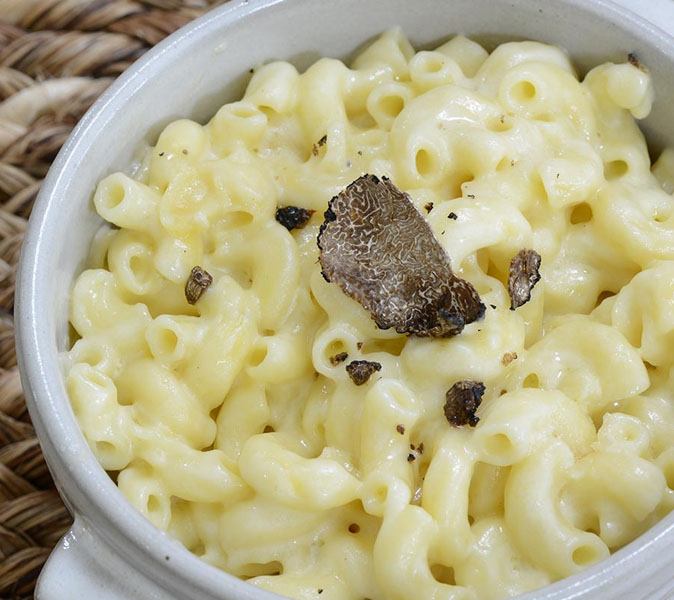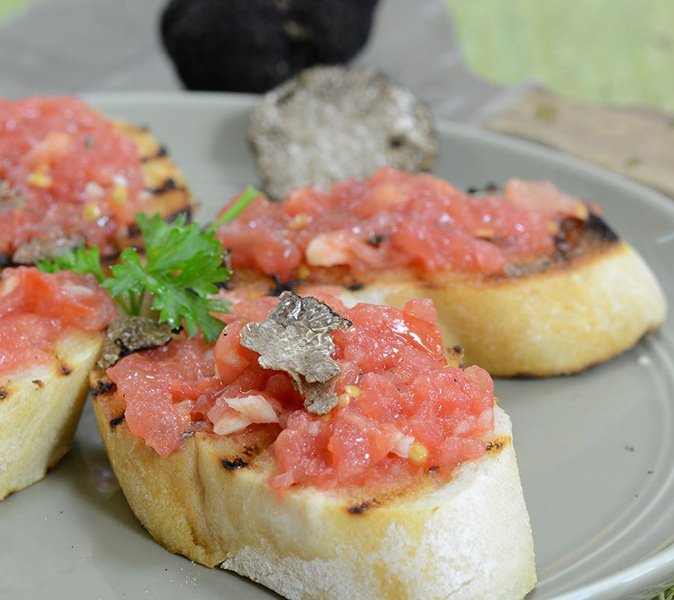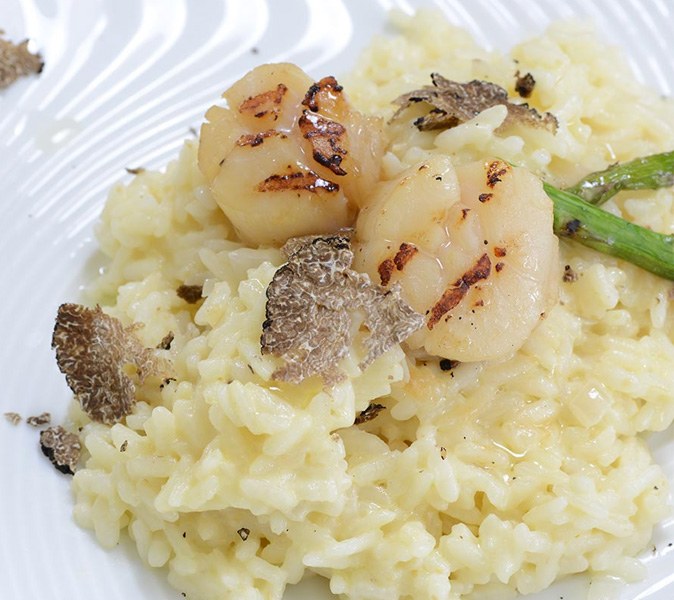Truffles are a type of fungus that grows underground, typically near the roots of trees such as oak or hazelnut. Fresh truffles are a delicate, sublime ingredient, and any dish that involves this delicacy should be cooked with the utmost preparation and thought.
So how to cook truffles? Much care should go into examining the type of gourmet truffle in your possession to determine how to use truffles. Things to consider: is it summer, winter, black, or white? Preparing truffle dishes À LA PÉRIGOURDINE is nothing less of an art.
Truffles tend to infuse their odor and flavor to everything around them, which is why they work perfectly with ingredients that are submissive and agreeable to let the truffle take center stage.

What Types of Truffles to Cook
There are various types of these mushrooms. Each one has unique features and can elevate simple dishes into extraordinary culinary experiences.
Fresh Truffles
Fresh ones are a true luxury in cooking. They have a robust and earthy flavor that pairs beautifully with simple dishes. Always should be used the same day, or within 3 days of purchase.
Preserved Truffles
Have a long shelf life, but after opening consume within a week. Preserved truffles are a practical option when fresh ones aren’t available. They come in jars or cans and retain much of their distinctive flavor. Here’s how to use preserved ones:
- Add them to sauces or soups for an extra depth of flavor.
- Blend them into spreads or pâtés.
- Use truffle-infused oils made from preserved truffles to drizzle over dishes.

Cooking with Winter Black Truffles
This famed truffle is the prize ingredient of chefs everywhere from five-star restaurants to sophisticated kitchens. While you will find many connoisseurs have different opinions on the preparation of winter black truffles, there are some universally respected precepts:
- Winter black truffles are best if used when cooking a dish, as their aroma and flavor are long-lasting, and will seep into your preparation.
- The French adore their Perigord Diamond when used in scrambled eggs and an omelet, as eggs easily assimilate the subtle earthy flavor of black truffles. This is also a very easy way of using black truffles in cooking since it leaves almost no room for error. Plus, if you’re using preserved ones, you can also use the truffle juice in the egg mixture, for even more of that yummy truffle flavor.
- Pasta, cuore! Indeed, shave, slice thinly, or grate over a hearty creamy pasta sauce, and prepare to reach heaven in one bite.
- Most tubers and vegetables with clean, fresh flavors contrast nicely with these mushrooms, especially celery root and leeks.
Cooking with Winter White Truffles
Because they are so aromatic and pungent, but their aroma tends to fade relatively quickly, white truffles (especially the winter variety) should NEVER be cooked.
Keep it simple: clean, slice or shave over some cooked risotto or pasta and you’re done.
They should never be mixed with any ingredient high in acidity, which would cause the flavor of the truffle to subside.
Let the truffle work its magic, and always add towards the end of the preparation.
Want to be super ingenious (ok, so we stole this from Wolfgang Puck)? Top a deluxe cheese pizza!
Cooking with Summer Black Truffles

Since they are the less expensive of the bunch, you can be more creative. Basically, follow the instructions for winter black truffles, but feel free to experiment with different truffle recipes and ingredients, always remember the flavor will be much more subtle than the winter variety, so it won't be as spectacular.
Cooking with Summer White Truffles
Use the same way you would use a winter white truffle, don't expect the same pungent aroma. So in this case, you can choose to cook them and experiment more.
How to use truffles in cooking: Universal Rules
1. The Truffle Is King
The noble truffle is king, and other ingredients should bow to him. Never try to overthrow him with other foods with strong flavors and overwhelming aromas, as the truffle flavor will be lost - a horrible waste.
2. Fat is good
Fats work perfectly with these mushrooms, and help bring the full flavor out, which is why truffles are usually paired with fatty foods like foie gras, butter, cheese, cream, and oils. Whichever kind of truffle you’re using, this rule works.
3. Holy Trinity
Pasta, rice, potatoes. Bland foods are brilliant to bring out the delicious flavor of the truffle.
4. Shave, Sliver, and Slice
You always want to maximize the truffle flavor, using the least amount of the ingredient as possible. So always slice into paper-thin wedges or strips, and let them work their magic. Use a truffle shaver (similar to a cheese grater) when shaving truffles. As for quantity, typically use 8-10 grams of truffle per person.
5. Save the Peel
If the recipe asks for a peeled truffle, save the peel to use for other recipes, or sauces.
6. Punch Up The Preserved
If you have eaten or cooked with fresh truffles before, don’t expect to get the same flavor out of preserved ones. Although aromatically exceptional in their own right, we do recommend enhancing the flavor of preserved truffles with a truffle oil or concentrato or a truffle paste, to truly bring back the fresh truffle flavor.
Making Truffle Products
Truffle Oil
Truffle oil is a versatile product made by infusing oil with truffle flavor. There are many ways to use truffle oil. It can be drizzled over dishes like pasta, risotto, or pizza for a gourmet touch. While black truffle oil has a robust flavor, white truffle oil offers a milder, more delicate aroma.
Truffle Butter
Combine fresh truffles or truffle oil with softened butter to create a decadent spread. Truffle butter is excellent on bread, mashed potatoes, or as a finishing touch for grilled steak.
Truffle Salt
Mixing finely grated truffles with sea salt produces a seasoning perfect for popcorn, fries, or roasted vegetables. It’s an easy way to incorporate the essence of truffles into everyday cooking.
Truffle Sauces
Ready-made black truffle sauces can be used in pasta dishes, on burgers, or as a dip. They are particularly popular for their convenience and ability to add depth to any meal.